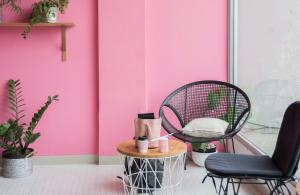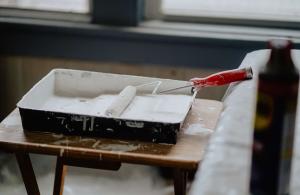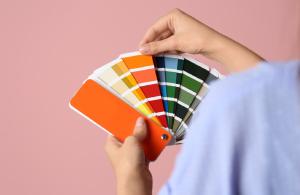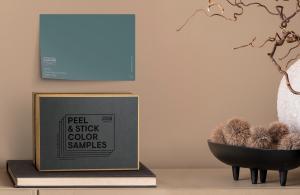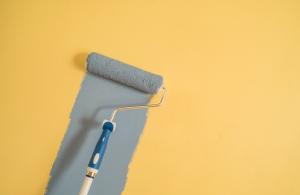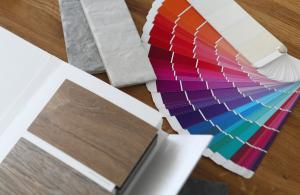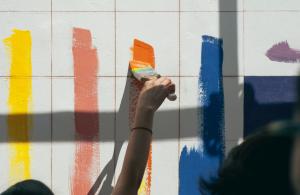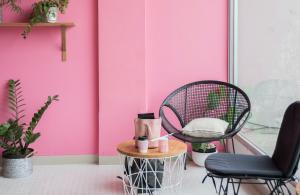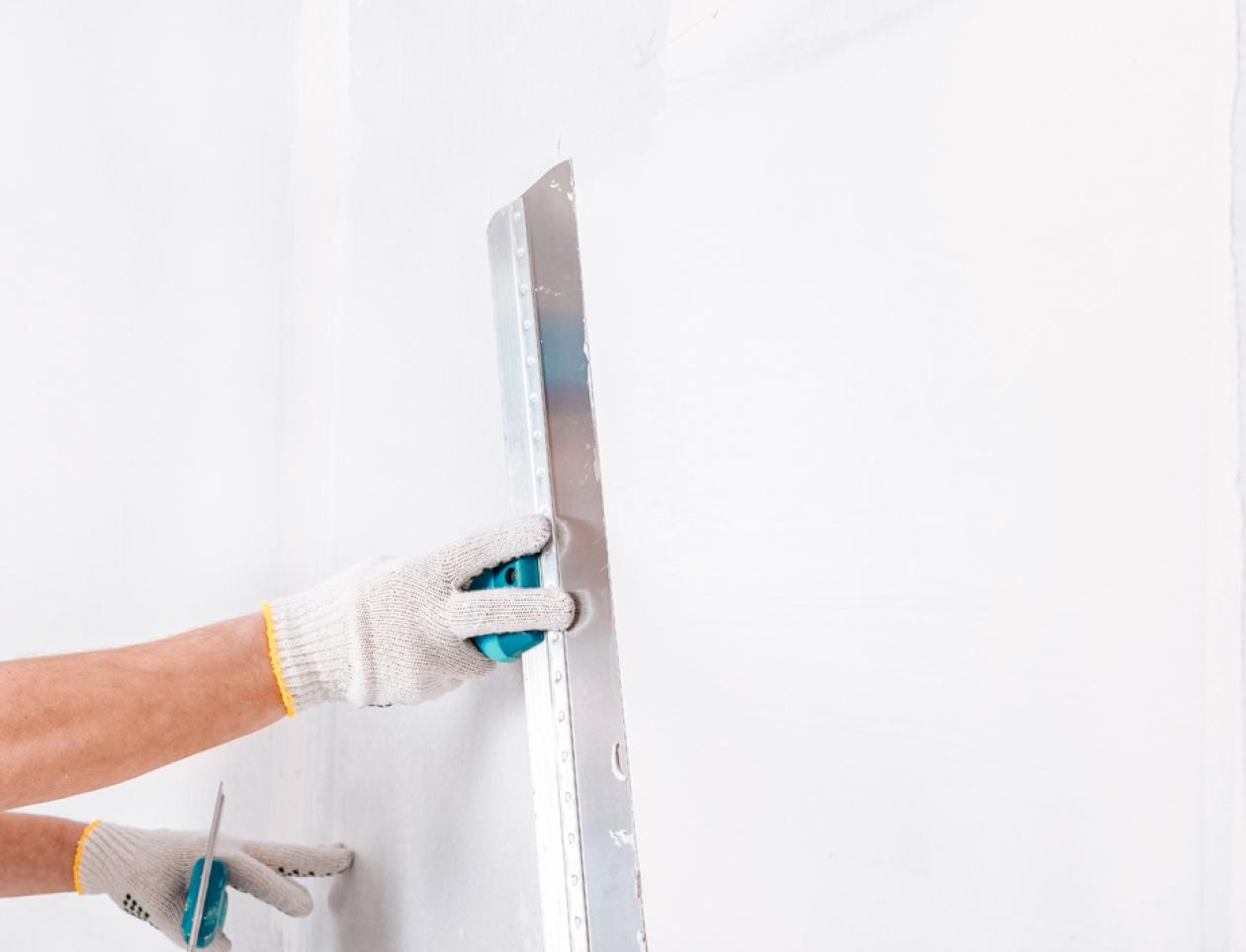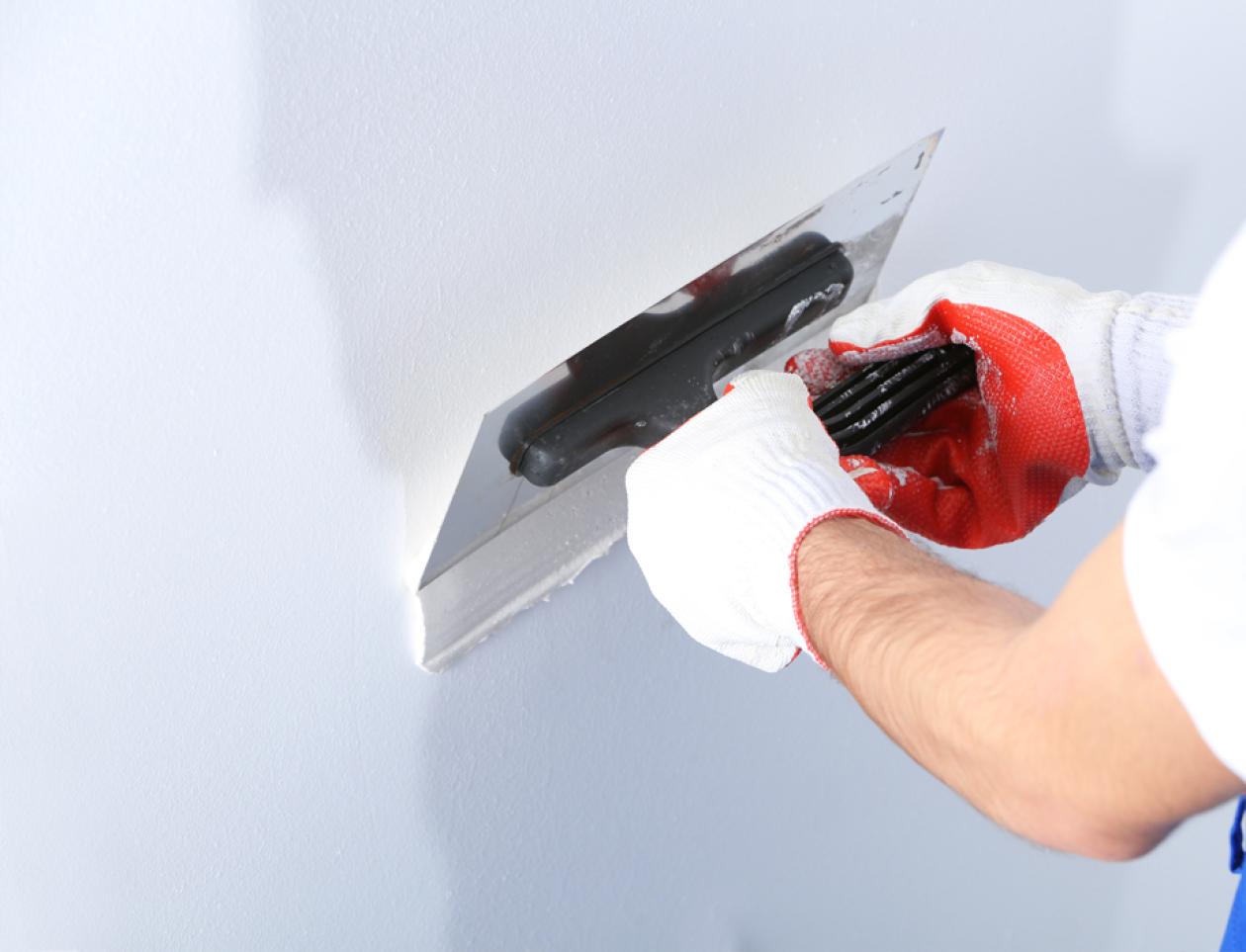1. Protect the area
Cover floors, furniture, and electrical outlets with plastic sheets or cardboard, and use masking tape on all edges and surfaces you don’t want to stain.
2. Wall preparation
Clean the wall first with a stiff-bristle brush and then sand it with abrasive paper to remove dust, surface residues, stains, and any loose or peeling paint.
3. Mixing the putty
If using powdered putty, add water and mix thoroughly until you achieve a yogurt-like consistency. Ready-to-use options, such as Spachtel, acrylic water-based putty, for interior and exterior use or Putty, elastomeric water-based putty with microspheres from KRAFT Paints, require only light stirring for homogeneity and can be applied immediately.
4. First coat application
With a putty knife or spatula, apply enough material and spread it evenly on the wall in vertical or horizontal strokes, creating a seamless coat.
5. Smoothing
Go over the fresh layer again with the spatula, applying light pressure to remove excess material and smooth the surface.
6. Drying
Allow the surface to dry completely. Depending on humidity, temperature, and the product used, this may take up to 12 hours. Some KRAFT Paints fillers, such as Spachtel Light, can dry in as little as one hour.
7. Sanding
Once dry, lightly sand the surface with fine-grit sandpaper to eliminate any lines or imperfections.
8. Repeat (if necessary)
If the wall is not perfectly smooth, apply a second, thinner coat using less material.
9. Final cleaning
Thoroughly clean the wall and surrounding area to remove all dust. The surface is now ready for priming and painting.
Useful Tips
- Do spot spackling ((i.e. touch-ups only on the holes and dents) only if most of the wall is in very good condition.
- For a seamless smooth surface that enhances paint, prefer full spackling.
- Use white putty if painting with light colors.
- Use grey putty only in cases where the wall will be painted in medium or dark shades.
- Apply primer before spackling only on plasterboard or highly absorbent walls.
- With prior priming, putty spreads more evenly and dries more consistently.
- For a flawless finish with less effort, trust KRAFT Paints putties and repairing mortars, offering top coverage and easy application.


